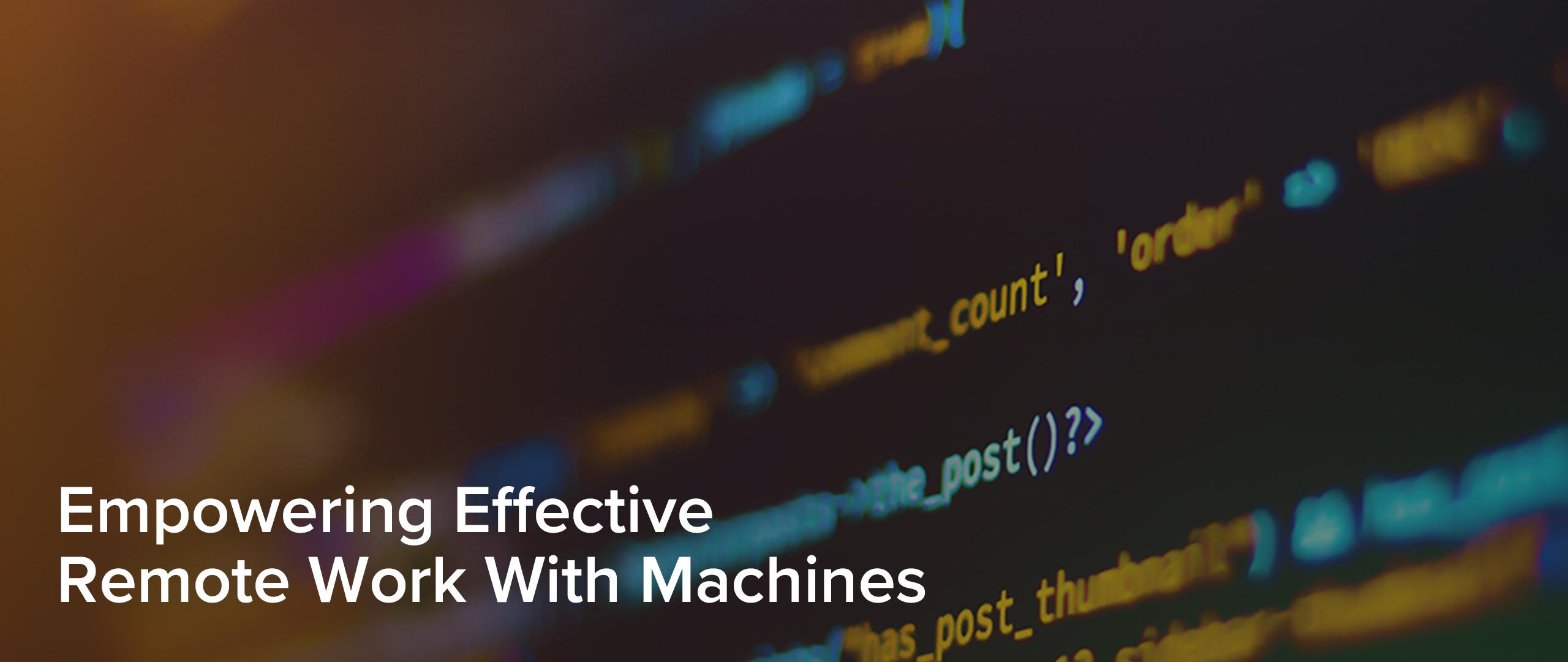Remote work is here for the long haul. So, too, in this age of the Fourth Industrial Revolution, is a world of increasing human-machine collaboration.
But how might both of these trends—remote work and human-machine collaboration—come together to create a richer, more meaningful, more productive work world for the real-life human beings who still run our organizations?
None of us can say for sure: It’s simply too early to tell. But that question is worth some serious thought…and there are some clear early answers.
The “new normal” of our working-world
By now, most people have accepted remote work as their official day-to-day, settling into a new stable routine. Family members are the new co-workers; kitchen tables are the new desk; bedroom corners and basement setups the new office.
However, a routine is exactly that: routine. While in-person brainstorms, out-of-office outings, and real-time collaboration helped us shake things up and spark creativity, our new environment doesn’t offer those luxuries. At least for now.
How do you foster growth and ignite innovation while sitting at your kitchen table?
Our advice? Introduce a new co-worker to the team…automation technology. Intelligent automation is the friend every remote employee needs, helping fuel productivity and innovation. Let’s explore why.

Redefining the Role of Machines
Machines have had a starring role in the future of work for some time now. However, no one can agree on exactly what role that is.
There have been understandable concerns around how machines will replace humans at work, with skeptics convinced it will essentially make us obsolete. That couldn’t be further from the truth.
Generally, artificial intelligence (AI) and automation don’t take human jobs, just the tasks we want off our plates. Machines offer a wide range of benefits by automating repetitive or mundane tasks, resulting in both time and cost savings. With such tangible effects, automation adoption has already been a high priority for many businesses.
In fact, McKinsey predicts that over half of organizations globally leverage automation to drive value, and according to a recent Deloitte survey, 61% of business leaders were actively redesigning jobs around AI and robotics.
Revolutionizing the Modern-Day Office
Then came COVID-19. The pandemic threw businesses into disarray, upending much of what people thought they knew about running an organization. New demands surged – paperwork had to be done in a matter of days instead of weeks, and accurate and timely data became business-critical.
But amid the disarray, one trend became clear: enterprise automation was suddenly more important than ever before.
Machines helped ease the new operating burdens stemming from the pandemic, reshaping disrupted business processes for the better. That’s because most AI-based machines require little intervention to complete tasks, becoming smarter over time as they are programmed for continuous learning. This helps overwhelmed teams maintain peace of mind knowing that these machines work smoothly on their own.
Tools like automation and AI even transform processes to be so efficient and simplified to the point where humans no longer have to be on-hand to perform certain tasks – a super important benefit to a remote workforce.
Machines don’t just help with the way we work, they help improve the decision-making behind what we work on. Automation tools also empower organizational efficiency by streamlining various workflows and keeping work on track.
The end result? With renewed bandwidth, employees get to focus on what they do best—being human. That is, they get to spend time, effort, and brand power on intuitive, challenging activities and less on processing and calculating – a big help at a time with monumental challenges to solve. Real-life human employees can use this extra time to look for opportunities for optimization, focus on innovation, and prioritize creative-thinking.
Work Is Anywhere
As the market value for machine technology continues to skyrocket – estimated to reach $114 billion by 2025 – and organizations increasingly use technology to automate processes, humans will face a tectonic shift in the workplace. This is only for the better.
Just take this leading oil and gas manufacturer for example. After experiencing challenges with its finance and accounting and back-office processes, the business decided to implement automation across key activities. The outcome? A far more productive, cost-effective workforce.
Automation makes the process of remote work far more efficient and streamlined than ever before. Distributed workforces remain engaged and innovation thrives, helping future-proof remote operations for any obstacles ahead. The impact of machine technology improves the employee experience for we human beings rather than diminishes it.
Machine-based digital workers are the co-workers we always wanted. And they’ll make the workplace—wherever it is—better for all of us.



